|
Machining
Two days later I removed the clamps and the bowing
condition was a little better. However, I still don't know 'why' this
happened.
Now it's time to machine the ends to length. What I'm
shooting for is 17 1/2" and as you can see I'm right at that dimension
according to my scale. And yes it seems weird to use something other
then some kind of 'precision measuring equipment' to hit a dimension.
But I don't have 18" calipers so this is the next best thing. Side Note:
When I do use a scale like this, I also use magnification to help me see
the lines better.
|
|
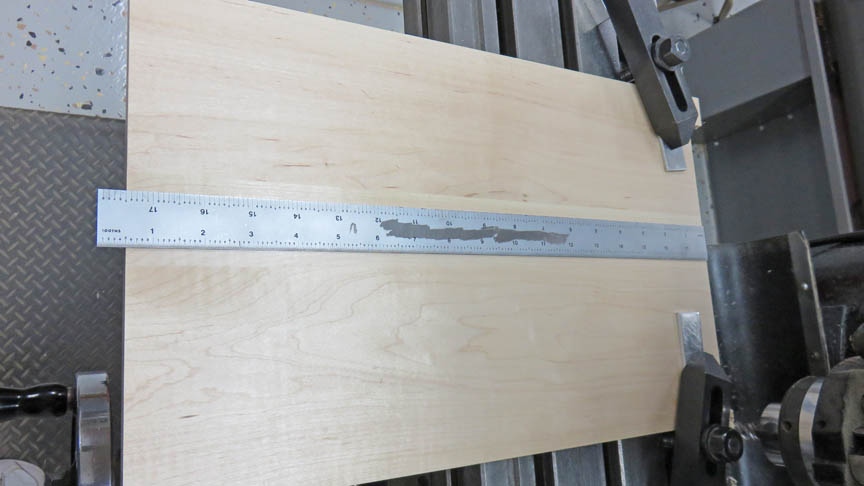 |
|
As you can see I've stopped short of the end because I
didn't want to split the wood. At this point I used a left-hand spiral
end mill to machine off the remainder. And yes, this left-hand cutter
needs to be run in the opposite rotational direction when you cut. This
process works great for a large piece like this.
|
|
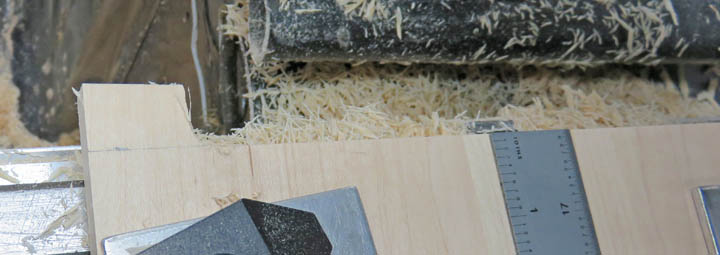 |
All the side pieces will have wooden dowels so they locate next to the
edges of the bottom properly, which is what I'm doing here.
|
|
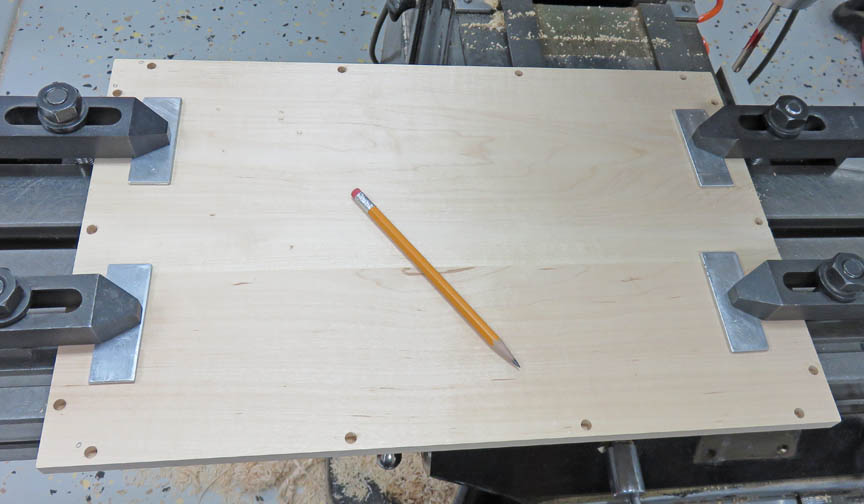 |
|
Every time I buy wooden dowel material (four feet long
pieces), they seem to be different
sizes. Plus they are out-of-round as well. When they're oversize, I've
found using my drill motor and sandpaper works pretty good for reducing
the outside diameter.
|
|
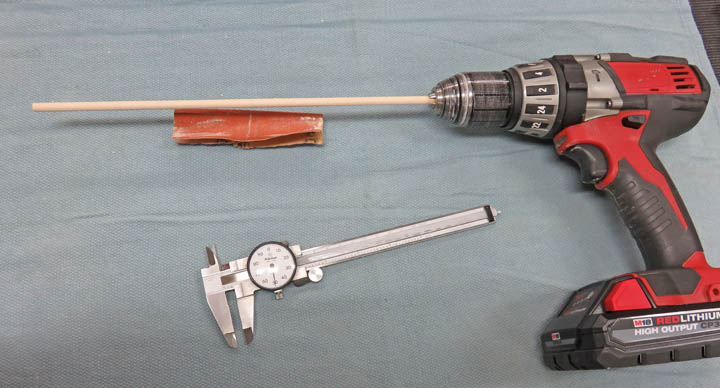 |
This is one of the longer side pieces (four holes). I just use my
digital readout to make all the holes the same distance apart.
|
|
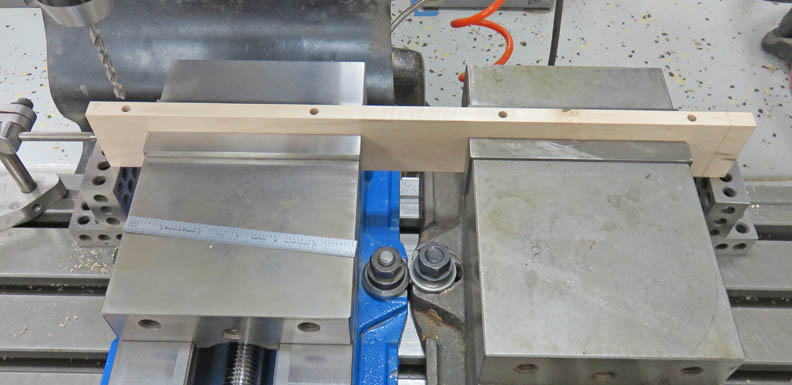 |
I can only go 1/4" deep on the bottom but just over 1/2" deep on the
side pieces. I then cut my dowels 3/4" long and this works out pretty
good.
|
|
 |
Here I'm reaming the 1/4" holes to size on the shorter side pieces.
|
|
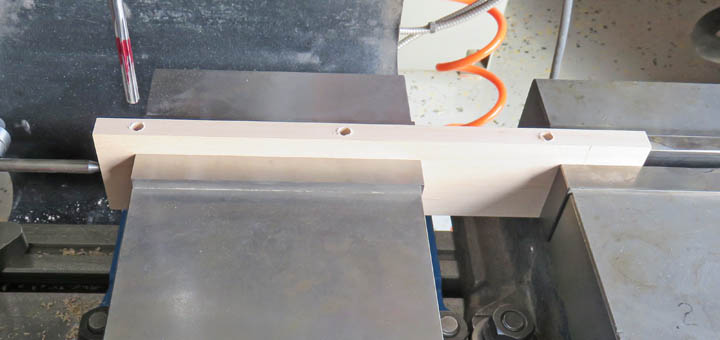 |
I'm machining the side pieces to length here. Notice I'm using a scrap
piece of wood behind my work piece so it doesn't splinter.
|
|
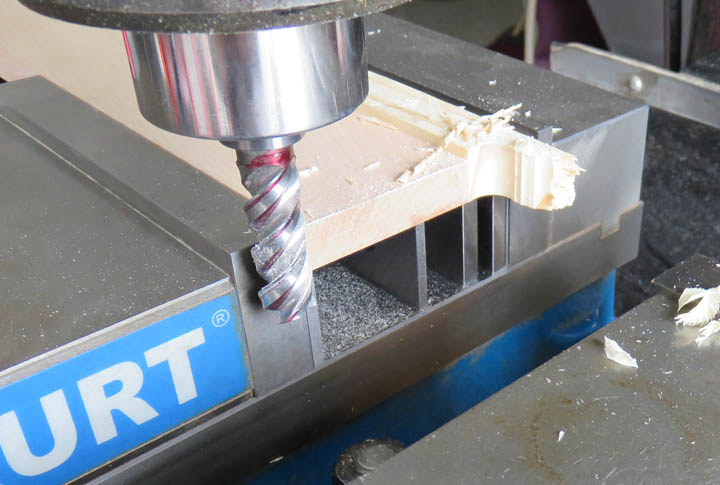 |
|
The distance between the arrows is about 1/16". This was
planned while putting in the dowel holes to make sure the side pieces
overhang the bottom piece. The reason for this is again, I don't own
large calipers. However, I can measure this small distance with my
smaller six inch calipers.
What I do is make a clean-up cut on my side piece, put
the dowels in the holes and then place the side piece on the bottom.
Then I can measure the amount that sticks out (overhang), place it
back in my milling machine and remove that exact amount.
|
|
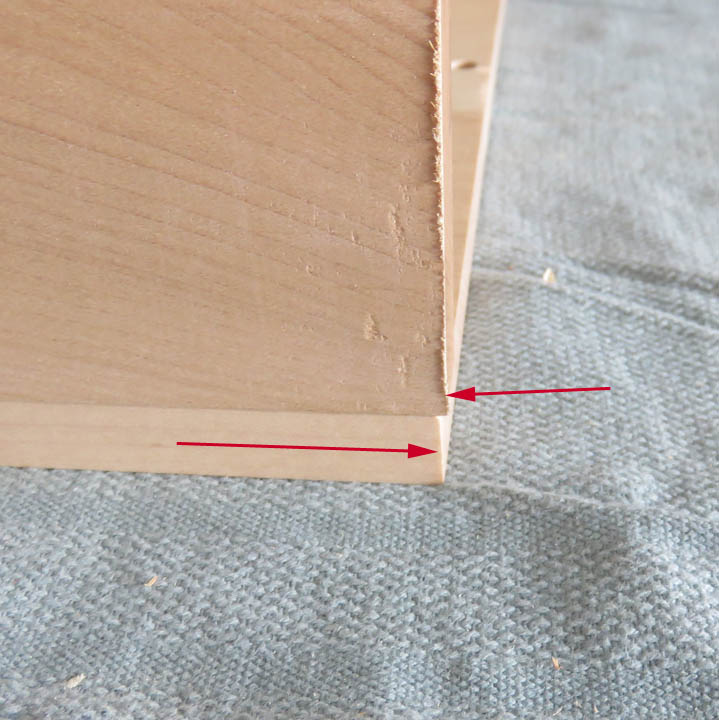 |
This is one of the two divider pieces. I'm only using two dowels per
piece to locate them.
|
|
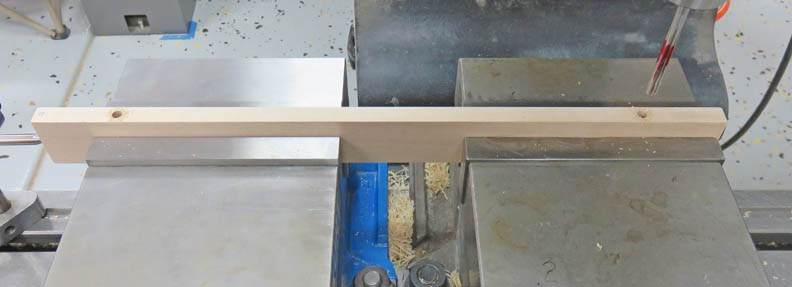 |
|
1
2
3
4
5
6
7 |